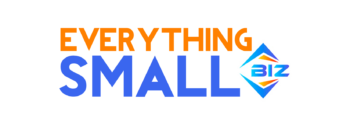Augmented reality helps patients better convey their symptoms to doctors and understand them more clearly. It also empowers patients to prevent illnesses through healthier lifestyles.
Medications can be explained more clearly using AR, allowing people to see 3D images of their internal structures and how the drug works. It can also improve pharmaceutical collaboration and speed up drug discovery.
Patient Education
Patients struggle to explain their health issues to doctors, resulting in misdiagnoses and incorrect treatment. AR can help solve this problem by projecting 3-D visualizations of the patient’s anatomy and physiological mechanisms, making it easier for both patients and doctors to understand each other.
Several healthcare organizations are already using AR to educate their patients. For example, Connect2MyDoctor, a telehealth platform by Melbourne-based tech startup Neev Tech Labs, uses augmented reality to display 3D images of the patient’s anatomy and medical reports to guide them through self-diagnosis and treatment. Another medtech startup, AccuVein, is using AR to make it easier for nurses to draw blood by projecting a virtual vein scanner over the skin. The company’s technology has made it 3.5x more likely for nurses to find a vein on the first stick.
Augmented reality can also improve the training of healthcare professionals. For instance, it can help medical students learn anatomy by superimposing 3D human body models into their real-life environments, eliminating the need for costly cadavers and anatomy theaters. It can even help surgical teams by providing them with “X-ray vision” through a pair of AR glasses.
Moreover, AR can also help speed up drug discovery by making it easier to visualize molecular structures and share data with multiple stakeholders. It can also help engineers and construction workers design products and buildings by overlaying 3D representations over a physical space. It can also help with home maintenance and repairs by displaying diagrams and instructions on how to fix things.
Patient Engagement
Patient engagement is a critical element of healthcare. But it can be challenging to connect with patients, especially with an aging population and increasing demand for remote care. Fortunately, augmented reality is a powerful tool for improving patient engagement and healthcare outcomes.
Augmented reality allows patients to visualize their symptoms and treatment in a tangible way, demystifying medical procedures. It also helps educate them about their condition and encourages adherence to prescribed medication and lifestyle changes.
AR can be used to monitor and train healthcare professionals, resulting in improved collaboration and wider specialist reach. It can also help ensure precision during surgery, minimizing the risk of mistakes that can cause serious harm.
For example, a surgeon can use an AR app to project images of bones and organs onto the patient’s skin during surgery to guide their instruments without making large incisions. This reduces surgical time and improves clinical outcomes.
Moreover, AR can help doctors better communicate with each other during complex operations. It can also be useful for educating and training medical students, residents, and nurse practitioners. AR can even be used to support telemedicine sessions and enhance remote healthcare delivery.
Patient Self-Management
Augmented reality is one of the most popular innovations, yielding significant results in a variety of industries. Among those are healthcare, where AR is transforming the way professionals work and train, as well as how patients connect with their care.
Patient education is a key part of the medical experience, and AR is the perfect tool to do just that. AR apps like HoloAnatomy allow users to see how their bodies function with realistic 3D models of the anatomy, while a virtual instructor guides them. This makes it easier for patients to understand and remember their medical treatment.
Similarly, AR can help patients to become proactive about their self-care and improve their outcomes through tools like virtual physiotherapy. By overlaying digital demonstrations of exercises with their body, users can follow along to learn how to properly perform a particular movement or stretch, reducing the risk of injury and improving their physical fitness.
The potential of AR for enhancing healthcare operations is virtually limitless. For example, AR could be used to identify the location of automated external defibrillators (AEDs) in public places, so people aren’t left searching for them in an emergency. Or, it could be used to provide step-by-step troubleshooting guides for medical equipment, reducing the amount of time field engineers spend trying to repair malfunctioning machines.
Patient Safety
AR allows healthcare professionals to visualize complex information in a comprehensible format using a smartphone or lightweight AR glasses. For example, a nurse can easily see how to properly clean a wound or a doctor can consult with colleagues from across the world to virtually “scrub in” for a surgical procedure.
Augmented reality is also revolutionizing how medical professionals train and work together. An app-based approach allows for standardized digital content to be shared and easily updated, even if scheduling constraints prevent access to a live simulation. For instance, a company called AccuVein has developed an AR application that helps nurses find veins more quickly during blood draws. The app overlays a virtual map of the patient’s body and shows the location of the vein, making it up to 3.5x more likely for nurses to hit their first stick on the first attempt.
In addition, doctors can use augmented reality to visualize and analyze data, such as MRI scans or CT scans, during surgery. This enables them to perform procedures more accurately, which reduces the need for secondary or corrective surgeries. And for medical equipment maintenance, AR can help technicians by superimposing detailed instructions and visual diagrams atop machinery. This saves time and effort by eliminating the need to look away from a machine and can result in improved product performance.

